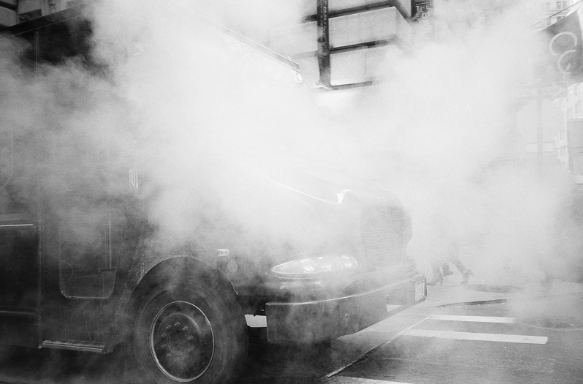Introduction
Short summer road trips, long holiday drives, or even just a quick commute can take a stressful turn if your car starts overheating. It’s one of those things that can sneak up on you: first, the temperature gauge creeps upward, then you spot steam seeping from under the hood. When your car overheats, it's more than just a hassle. It can cause serious, costly engine damage that could have been avoided with timely action.
Used cars, especially ones with some miles on them, may be a little more prone to overheating, particularly in the summer heat. Worn hoses, aging thermostats, or low coolant levels are all common in older vehicles and can quietly lead to bigger problems. If you spot early signs like a blinking temperature light or rising steam, knowing what steps to take next could save you from being stranded or facing a major repair.
Common Causes of Overheating in Pre-Owned Vehicles
Engines produce a lot of heat. That’s just part of running. Your cooling system is what keeps everything balanced. But if any part of that system stops working the way it should, things can heat up fast. Here are a few of the most common reasons your used car might start to overheat.
1. Low coolant levels
Coolant is critical to keeping your engine temperature in check. If it’s low, there's nothing to carry away the heat. Without enough coolant, the engine can't cool itself, and temperatures rise quickly.
2. Faulty radiator or cooling fan
The radiator and its fan are in charge of pulling heat from the coolant before it cycles back into the engine. If the radiator is clogged or the fan stops working, hot coolant goes right back into the engine without being cooled.
3. Thermostat failure
The thermostat controls when coolant is allowed to flow. If it gets stuck closed, the coolant can’t circulate at all. When that happens, heat gets trapped in the engine and everything can overheat within minutes.
4. Leaking hoses or damaged water pumps
Even a small hose leak or a weak water pump can stop coolant from reaching every part of the engine. These often go unnoticed until they cause overheating, especially during long drives or hot weather.
5. Clogged radiator or cooling system
Dirt, corrosion, or buildup can block coolant from flowing freely. A blocked radiator or cooling system won’t do its job, and untreated buildup can worsen over time.
These problems might be small at first, but they can show up during a rush-hour crawl or when your AC is running non-stop during a hot day in Saluda. The earlier you catch them, the easier they are to fix.
Immediate Steps to Take When Your Car Overheats
If your temperature gauge spikes or you see steam coming from the hood, don’t panic. There’s still time to keep things from getting worse. Here are the steps you need to follow right away:
- Pull over somewhere safe as soon as possible and turn off the engine. Do not keep driving.
- Let the engine cool down completely before opening the hood. This usually takes about 15 to 30 minutes.
- Once it’s safe to look under the hood, check your coolant levels. If you have coolant with you and the levels are low, pour some into the reservoir. Never open the radiator cap while the engine is still hot.
- Look around for signs of a leak or damage. A cracked hose or broken fan could be the culprit.
- If cooling off and topping off the coolant doesn't bring things back to normal, get your car to a shop. Don't try “just making it” to your destination. That could cause serious damage.
For example, a driver heading through traffic in Virginia during a summer afternoon notices the temp warning light flicker. By stopping right away and letting the car cool before checking it, they avoid making the problem worse. It turns out their cooling fan had stopped turning, but they caught it early enough to prevent engine damage.
Knowing what to do in those few moments can save you major hassle and money.
Preventive Measures to Avoid Overheating
No one wants to be stuck on the roadside waiting for their engine to cool down. The best way to avoid it? Stay ahead of the problem with regular checks and maintenance. Especially for pre-owned vehicles, being consistent can mean the difference between a smooth drive or a breakdown.
Start with the basics:
- Check your coolant levels regularly, and never ignore drops. It could be more than just natural evaporation.
- During routine servicing, ask for a cooling system check. That includes your radiator, water pump, thermostat, and hoses.
- Replace cracked or worn-out belts and hoses. These parts are small but can cause big problems if they fail.
- Make sure your radiator fan works when the engine heats up. If it doesn’t kick on in traffic or while idling, that’s a red flag.
- Try to plan your driving to avoid sitting in traffic during the hottest parts of the day, especially with the AC running full blast.
One story we’ve heard is of a new owner of a used SUV who scheduled a summer tune-up. A cracked radiator hose was discovered just in time—it hadn’t started leaking yet, but signs of aging were clear. That simple checkup saved them from serious trouble on their family trip.
Taking small steps like these regularly helps you stay ahead of major repairs.
When to Seek Professional Help for Overheating
Sometimes the signs are plain, but other times, overheating problems stay hidden until it’s too late. If your car continues to overheat or you’re unsure what’s wrong, it’s best to bring it to a qualified team for a full look.
Here are some signs that it’s time to get help:
- You’ve had to refill your coolant more than once in a short time.
- Steam comes from under the hood, even after refilling and cooling off.
- Your car overheats even during highway driving, which normally cools the engine.
- The temperature light won’t turn off or keeps flashing.
- You smell something sweet or hear strange gurgling from the engine area.
Service shops can do pressure tests to find small leaks or pinpoint a clog. Many times, what seems like a major engine issue might just be a small part failing. Getting answers from professionals keeps you from replacing things that actually still work.
Trusted pros who deal with pre-owned vehicles are familiar with how certain models wear over time. That experience makes a big difference when it comes to catching issues others might overlook.
Keep Every Trip Worry-Free with a Well-Maintained Vehicle
Handling an overheating engine the right way is just part of driving smart. The better goal is to not face it at all. Used cars can be just as reliable as new ones if maintained properly, especially in places like Saluda where hot summer driving conditions really test your vehicle.
Keeping an eye on coolant levels, watching for warning signs, and having regular checkups done by professionals will go a long way. Make it a habit, and you’ll have fewer surprises down the road.
Whether you’re heading into town or out for a weekend trip, it’s good to know your cooling system is up for the ride. When your vehicle is ready, you’re ready—for every season, every road, and every mile ahead.
For those looking to enjoy stress-free driving all summer long, staying on top of your cooling system maintenance can make all the difference. Regular checkups not only keep your vehicle running smoothly but also help prevent unexpected repairs. If you're ready to explore dependable options, take a look at our pre-owned vehicles at United Auto Sales Saluda today.



